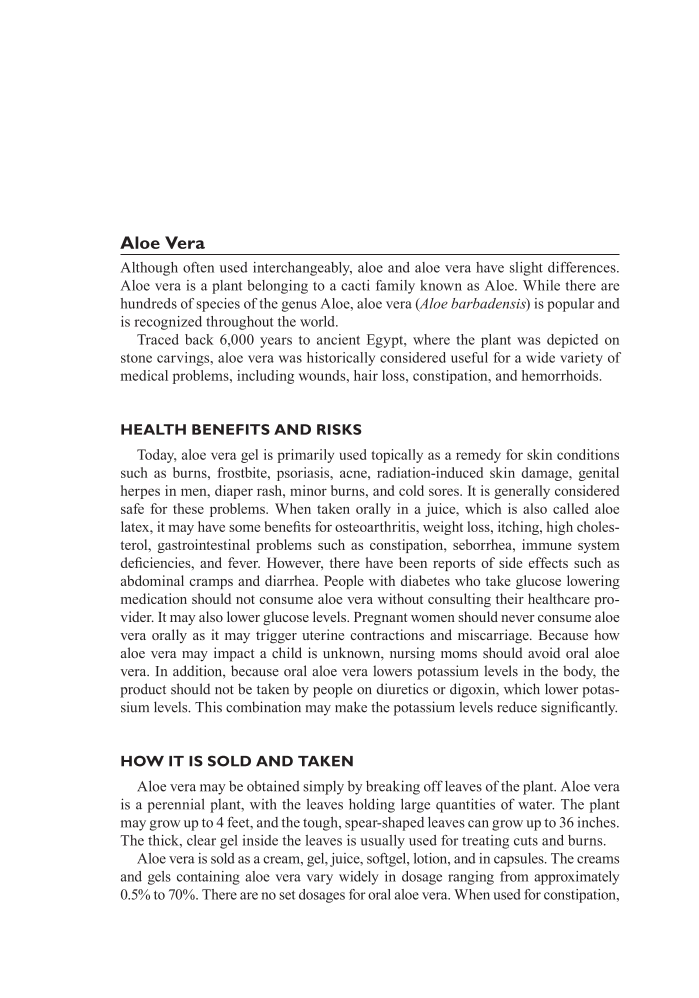Aloe Vera Although often used interchangeably, aloe and aloe vera have slight differences. Aloe vera is a plant belonging to a cacti family known as Aloe. While there are hundreds of species of the genus Aloe, aloe vera (Aloe barbadensis) is popular and is recognized throughout the world. Traced back 6,000 years to ancient Egypt, where the plant was depicted on stone carvings, aloe vera was historically considered useful for a wide variety of medical problems, including wounds, hair loss, constipation, and hemorrhoids. HEALTH BENEFITS AND RISKS Today, aloe vera gel is primarily used topically as a remedy for skin conditions such as burns, frostbite, psoriasis, acne, radiation-induced skin damage, genital herpes in men, diaper rash, minor burns, and cold sores. It is generally considered safe for these problems. When taken orally in a juice, which is also called aloe latex, it may have some benefits for osteoarthritis, weight loss, itching, high choles- terol, gastrointestinal problems such as constipation, seborrhea, immune system deficiencies, and fever. However, there have been reports of side effects such as abdominal cramps and diarrhea. People with diabetes who take glucose lowering medication should not consume aloe vera without consulting their healthcare pro- vider. It may also lower glucose levels. Pregnant women should never consume aloe vera orally as it may trigger uterine contractions and miscarriage. Because how aloe vera may impact a child is unknown, nursing moms should avoid oral aloe vera. In addition, because oral aloe vera lowers potassium levels in the body, the product should not be taken by people on diuretics or digoxin, which lower potas- sium levels. This combination may make the potassium levels reduce significantly. HOW IT IS SOLD AND TAKEN Aloe vera may be obtained simply by breaking off leaves of the plant. Aloe vera is a perennial plant, with the leaves holding large quantities of water. The plant may grow up to 4 feet, and the tough, spear-shaped leaves can grow up to 36 inches. The thick, clear gel inside the leaves is usually used for treating cuts and burns. Aloe vera is sold as a cream, gel, juice, softgel, lotion, and in capsules. The creams and gels containing aloe vera vary widely in dosage ranging from approximately 0.5% to 70%. There are no set dosages for oral aloe vera. When used for constipation,
Document Details My Account Print multiple pages
Print
You have printed 0 times in the last 24 hours.
Your print count will reset on at .
You may print 0 more time(s) before then.
You may print a maximum of 0 pages at a time.
































































































































































































































































































































































